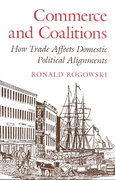Once again, you are working with the UCSB wages data that was introduced in Question 1. Suppose, for simmicity, that UCSB has 4 race categories in the data: Asian, Black, Latinx, and White, and each individual i can only belong to one race. You estimate the following model: Wages,- = g + lAsicml- + zBlacki + 33Lutinzi + u,- where Asian,- is an indicator equal to 1 if employee 1' is Asian (0 otherwise), Black,- is an indicator equal to 1 if employee 12 is Black (0 otherwise), Latina,- is an indicator equal to 1 if employee 1' is Latinx (0 otherwise), and White,- is an indicator equal to 1 if employee 12 is White (0 otherwise). a) (2 points) According to this model, what is the average wage of a Black employee at UCSB? b) (3 points) You estimate the model and receive the following output: 60 = 13 seat) = 0.1 3. = 0.5 SE(31) = 0.4 Note that 819(5):.) is the standard error of [in and SELl) is the standard error of 31. Perform a hypothesis test on the null hypothesis (size of test 5%) that the wage gap between Asian employees and White employees at UCSB is 0. Be sure to include the following: the null and alternative hypothesis, the test statistic, the critical value, and whether to reject or not reject. c) (2 points) Compute the 95% condence interval under the null hypothesis from part (b) for 81. d) (3 points) Briey describe, in your Own words, what a 95% condence interval is. e) (3 points) Your supervisor wants to be certain that UCSB is following minimum wage laws. Test the hypothesis (size of test 5%) that the average wage of a White employee is greater than or equal to 15. As before, be sure to include the following: the null and alternative hypothesis, the test statistic, the critical value, and whether to reject or not reject. f) (2 points) Your friend decides to estimate the following model using your sample: Wages, = 180 + lAsiam + 1328th + gLatinIr + 134White, + 21, What will happen to your friend's R2 value? g) (2 points) Your supervisor wants you to enrich the model even more and estimate the following: Wages,- = e'i'lASini'i'ZBlkai+183Ltiri+f34Malei+50\"730i+601'30i*Malei+ui where M ale, is an indicator equal to 1 if employee 13 is a male (0 if female) and Over30, is an indicator equal to 1 if employee 2' is over the age of 30 (0 otherwise). Note that Over30,- * Mule,- is what we call an interaction term. Find the average difference of wages for Asian men over 30 and white women under 30







